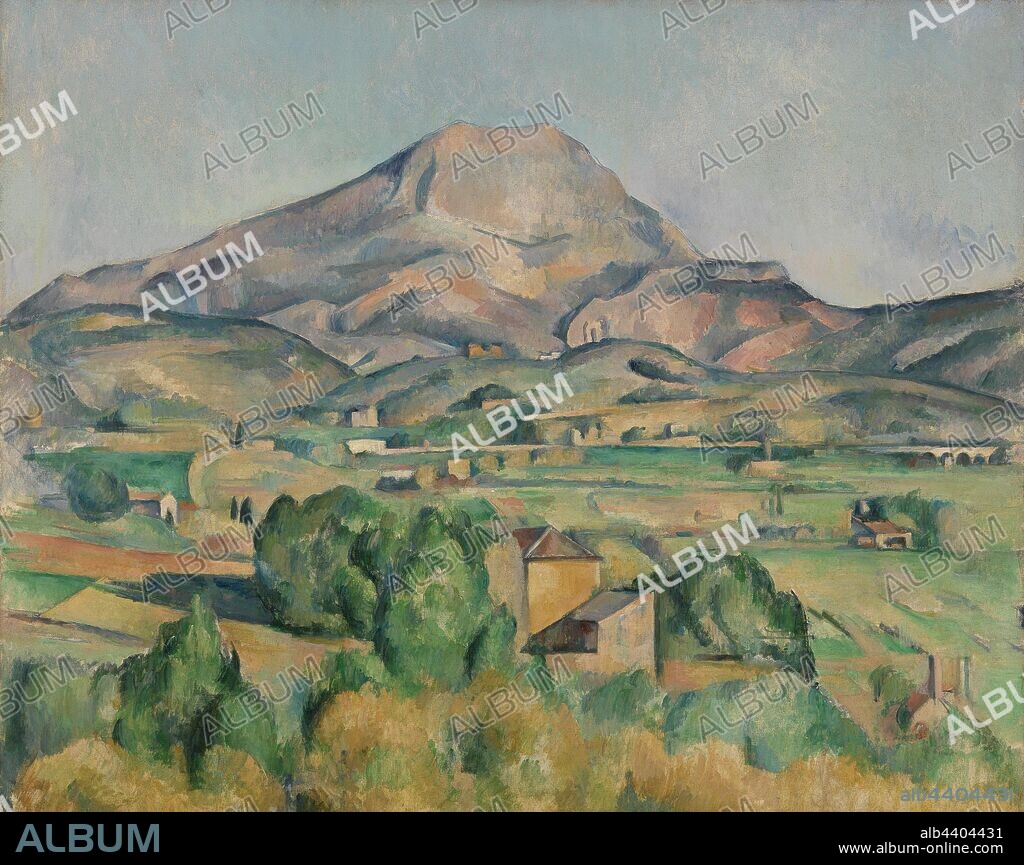alb4404431
Paul Cézanne: Mont Sainte-Victoire (La Montagne Sainte-Victoire), Paul Cézanne, 1892–1895, Oil on canvas, Mont Sainte-Victoire, which towered over the Aix-en-Provence region of southern France, was one of Cézanne's favorite motifs. He knew the mountain well, having spent his childhood exploring its terrain, and he painted it several dozen times from different vantage points. Certainly the shape and structure of the mountain appealed to Cézanne as a painter. But the mountain also held symbolic meaning, representing for him the ancient countryside—the authentic France—during a moment when Paris was rapidly modernizing. On the right side of the canvas, one can just make out an ancient Roman aqueduct., Overall: 28 3/4 x 36 1/4 in. (73 x 92 cm).

|
Add to another lightbox |
|
Add to another lightbox |



Caption:
Paul Cézanne: Mont Sainte-Victoire (La Montagne Sainte-Victoire), Paul Cézanne, 1892–1895, Oil on canvas, Mont Sainte-Victoire, which towered over the Aix-en-Provence region of southern France, was one of Cézanne's favorite motifs. He knew the mountain well, having spent his childhood exploring its terrain, and he painted it several dozen times from different vantage points. Certainly the shape and structure of the mountain appealed to Cézanne as a painter. But the mountain also held symbolic meaning, representing for him the ancient countryside—the authentic France—during a moment when Paris was rapidly modernizing. On the right side of the canvas, one can just make out an ancient Roman aqueduct., Overall: 28 3/4 x 36 1/4 in. (73 x 92 cm)
Personalities:
Credit:
Album / quintlox
Releases:
Model: No - Property: No
Rights questions?
Rights questions?
Image size:
6145 x 4870 px | 85.6 MB
Print size:
52.0 x 41.2 cm | 20.5 x 16.2 in (300 dpi)
Keywords:
1892–1895 • AIX-EN-PROVENCE REGION • ANCIENT COUNTRYSIDE • ANCIENT ROMAN AQUEDUCT • AUTHENTIC FRANCE • CANVAS • CÉZANNE'S FAVORITE MOTIFS • CÉZANNE • FORMS (GEOMETRIC) • LA MONTAGNE SAINTE-VICTOIRE • MOMENT • MONT SAINTE-VICTOIRE • MOUNT • MOUNTAIN • MOUNTAINS • MOUNTAINS. • OIL • OUT • PAINTED • PAINTER • PARIS • PAUL CEZANNE • RAPIDLY MODERNIZING • REPRESENTING • RIGHT SIDE • SHAPE • SOUTHERN FRANCE • STRUCTURE • SYMBOLIC MEANING • TERRAIN • TOWERED • VANTAGE POINTS
 Pinterest
Pinterest Twitter
Twitter Facebook
Facebook Copy link
Copy link Email
Email

